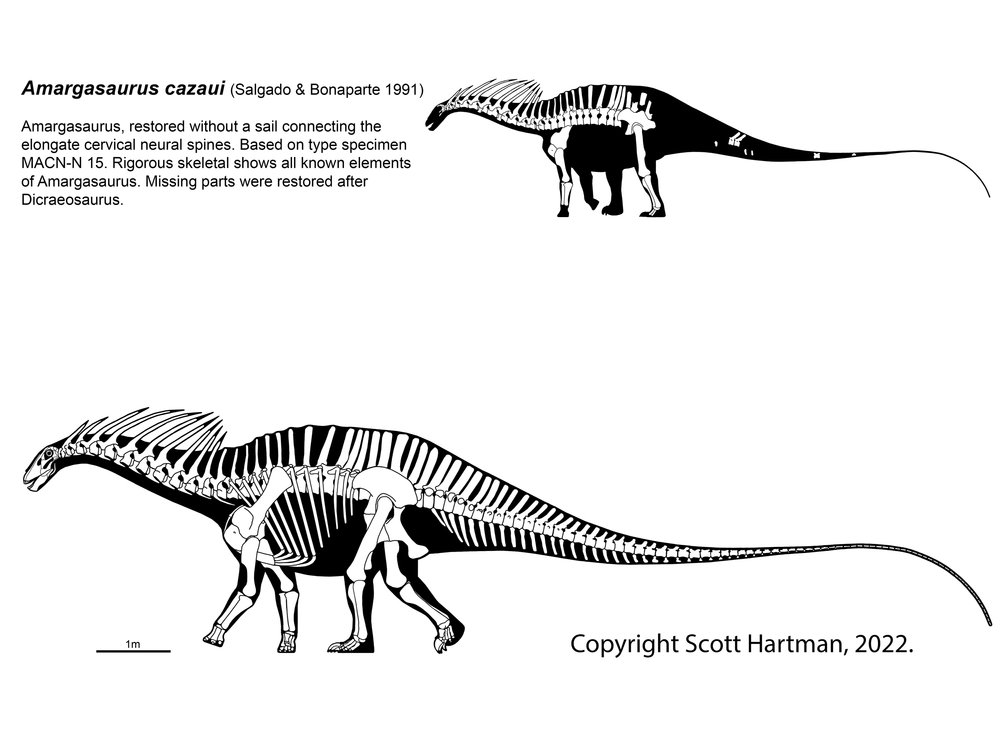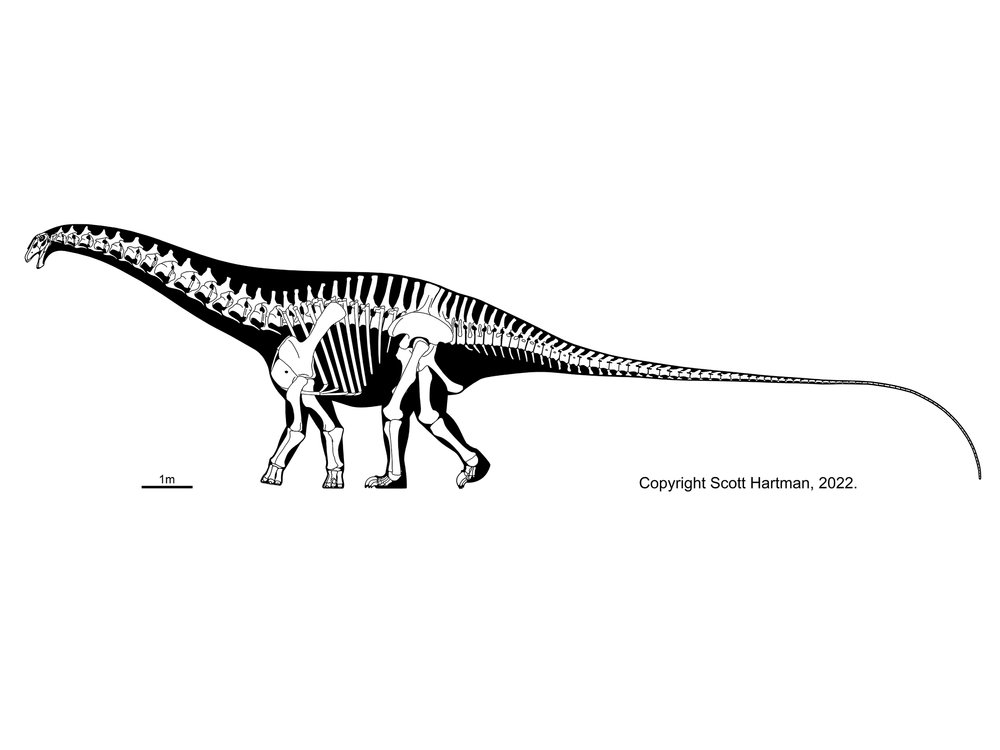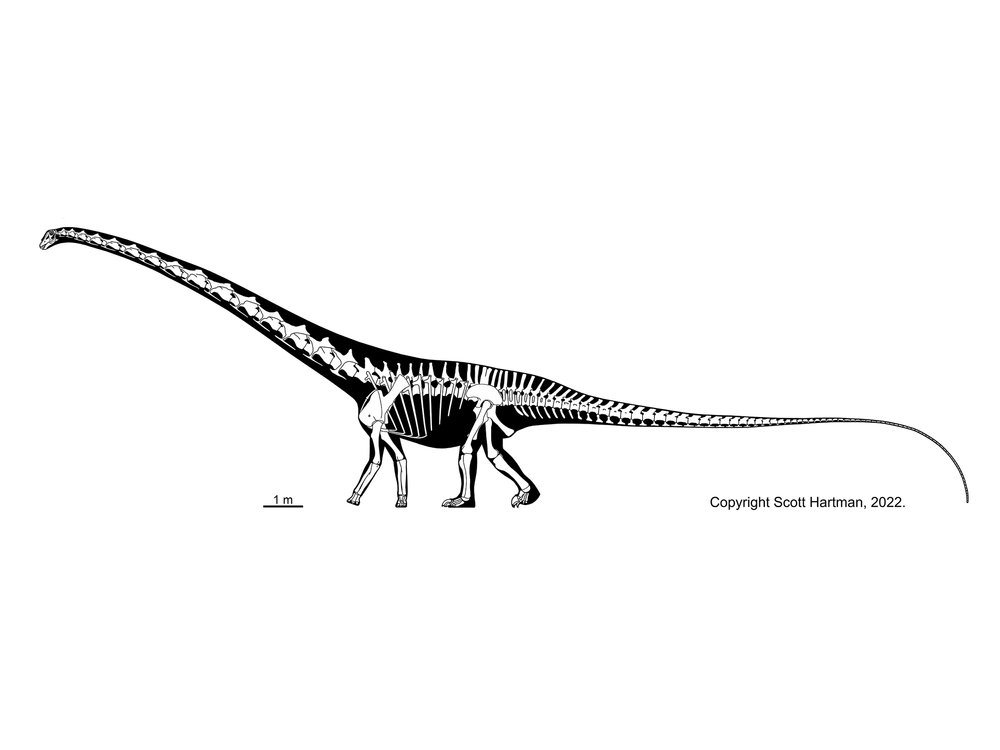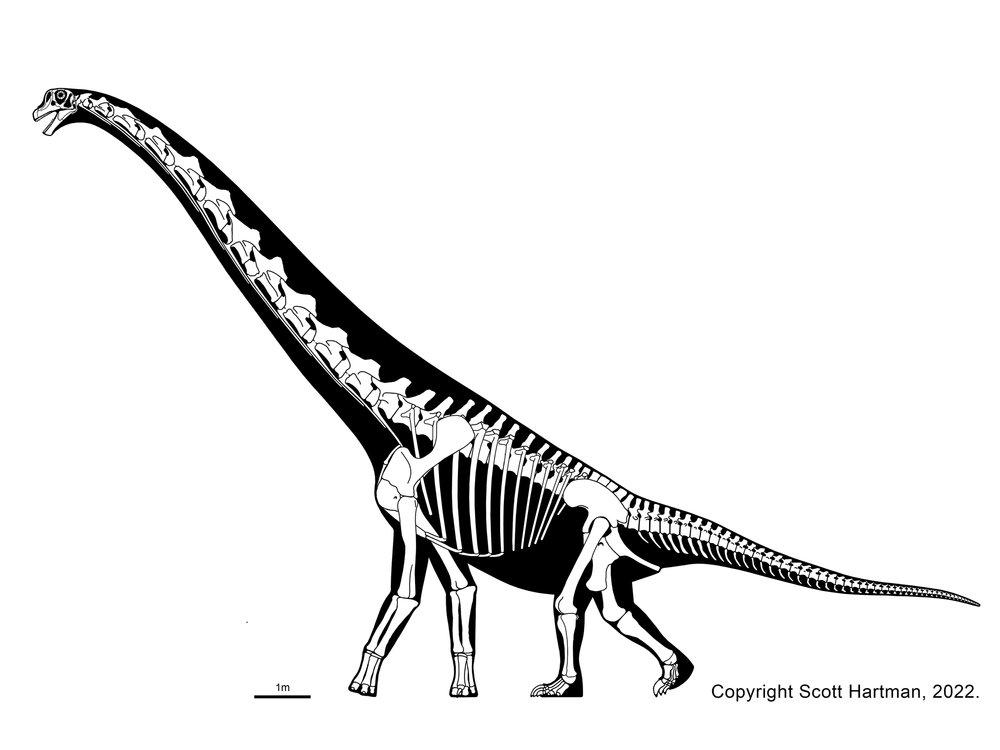Post by Hatzegopteryx on Feb 15, 2014 18:01:39 GMT
If you read Scott Hartman's blog, you probably already know that he isoverhauling his sauropod gallery. I had seen this right when he posted it, but only realised I could post it here right now. Here's his post:
"I'd like to offer a belated welcome to 2014. To start the new year off right, I've completely overhauled the sauropod skeletal gallery. This includes the debut of the Early Cretaceous brachiosaur Cedarosaurus and improved freshness dates (copyright) on all of them. You will no longer find a revision date older than 2013 (and really, 2012-2013 is about the oldest date you should accept if you want to make sure a skeletal is properly revised). The Great Skeletal Repose that started with theropods in 2011 has now reached sauropods (and their "prosauropod" cousins)."
"The new pose shows the sauropods in a slow amble (which turns out to be a rather brisk walking speed), but not doing anything so energetic that it should cause controversy.
In addition to the repose, several anatomical updates have now been "rolled out" to every critter. What this means to you, aside from knowing they are as up-to-date as I can make them, is that all of the sauropod skeletals now follow a consistent set of anatomical interpretations. While I hope to get several extra posts (and a publication or two) out of those changes, I will highlight the major items artists may wish to be aware of:
1. Plantigrade feet: Almost all modern work on sauropod biomechanics have found them to have plantigrade hind feet (where the foot bones are held closer to horizontal) with a padded backing, yet most skeletal reconstructions continue to illustrate them walking on their tip toes. Now the feet reflect the modern understanding of sauropod anatomy.
2. Following research I presented at SVP in 2012, having plantigrade hind feet but digitigrade "hands" has a material impact on the orientation of the vertebral column. This has several consequences, including necks that are more upright without needing extreme flexure at the back-neck juncture, and tails that exit the pelvis horizontally rather than arcing up into the sky (this has important functional implications, but more on that some other time).
3. Neck muscles have traditionally been restored as very minimal, often citing birds as the reason. It turns out that bird necks are actually far more muscled than many people assumed, and bifurcated neural spines in particular seem to indicate rather generous neck muscles over the base of the neck. These changes, along with increasing the size of the muscles that run from the coracoids to the neck on the bottom are now reflected in the silhouettes.
4. Finally, I've continued to bulk out the base of the tails to accomodate a more realistic mass for the leg-retracting caudofemoralis musculature. In addition to reviewing dissections, this change is based on work by Scott Persons and Phil Currie and conversations with Heinrich Mallison, and is something I've discussed previously here.
There are a few additional nips and tucks, but these are the major changes, and will probably see their own expanded posts at some point. For those of you who have contacted me to ask about higher resolution versions of my skeletals, this overhaul will also allow me to start offering them as a high-resolution booklet soon(TM). In the mean time go check out the full-sized gallery."
Some of the updated skeletals are...
Amargasaurus cazaui

Apatosaurus excelsus

Barosaurus lentus

And the new skeletal, Cedarosaurus weiskopfae

Link: www.skeletaldrawing.com/home/sauropod-gallery-overhauled
"I'd like to offer a belated welcome to 2014. To start the new year off right, I've completely overhauled the sauropod skeletal gallery. This includes the debut of the Early Cretaceous brachiosaur Cedarosaurus and improved freshness dates (copyright) on all of them. You will no longer find a revision date older than 2013 (and really, 2012-2013 is about the oldest date you should accept if you want to make sure a skeletal is properly revised). The Great Skeletal Repose that started with theropods in 2011 has now reached sauropods (and their "prosauropod" cousins)."
"The new pose shows the sauropods in a slow amble (which turns out to be a rather brisk walking speed), but not doing anything so energetic that it should cause controversy.
In addition to the repose, several anatomical updates have now been "rolled out" to every critter. What this means to you, aside from knowing they are as up-to-date as I can make them, is that all of the sauropod skeletals now follow a consistent set of anatomical interpretations. While I hope to get several extra posts (and a publication or two) out of those changes, I will highlight the major items artists may wish to be aware of:
1. Plantigrade feet: Almost all modern work on sauropod biomechanics have found them to have plantigrade hind feet (where the foot bones are held closer to horizontal) with a padded backing, yet most skeletal reconstructions continue to illustrate them walking on their tip toes. Now the feet reflect the modern understanding of sauropod anatomy.
2. Following research I presented at SVP in 2012, having plantigrade hind feet but digitigrade "hands" has a material impact on the orientation of the vertebral column. This has several consequences, including necks that are more upright without needing extreme flexure at the back-neck juncture, and tails that exit the pelvis horizontally rather than arcing up into the sky (this has important functional implications, but more on that some other time).
3. Neck muscles have traditionally been restored as very minimal, often citing birds as the reason. It turns out that bird necks are actually far more muscled than many people assumed, and bifurcated neural spines in particular seem to indicate rather generous neck muscles over the base of the neck. These changes, along with increasing the size of the muscles that run from the coracoids to the neck on the bottom are now reflected in the silhouettes.
4. Finally, I've continued to bulk out the base of the tails to accomodate a more realistic mass for the leg-retracting caudofemoralis musculature. In addition to reviewing dissections, this change is based on work by Scott Persons and Phil Currie and conversations with Heinrich Mallison, and is something I've discussed previously here.
There are a few additional nips and tucks, but these are the major changes, and will probably see their own expanded posts at some point. For those of you who have contacted me to ask about higher resolution versions of my skeletals, this overhaul will also allow me to start offering them as a high-resolution booklet soon(TM). In the mean time go check out the full-sized gallery."
Some of the updated skeletals are...
Amargasaurus cazaui

Apatosaurus excelsus

Barosaurus lentus

And the new skeletal, Cedarosaurus weiskopfae

Link: www.skeletaldrawing.com/home/sauropod-gallery-overhauled







 <- imma rek u btichs
<- imma rek u btichs